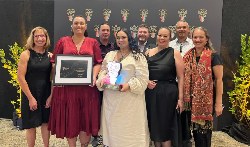Dying to breathe
Dying to breathe
Fifteen years ago I almost died from asthma in London. For Asthma Awareness week I am taking the opportunity to share the story of overcoming my own asthma and how I now help others do the same.
Fifteen years ago I almost died from asthma, not once but three times. I was forty two and had been asthmatic since the age of four. But as I got older it got worse and that summer of 2000 in London could easily have been my last.
The third asthma attack in a week came on suddenly as I was sitting in a London café. I was pumping my blue inhaler but my lungs were getting tighter and I started to panic. I ran from the café jumped into a London cab and the driver bolted to the nearest hospital.
Staggering into the entrance of University College Hospital off Euston I was going blue and that got me instant service. White coated interns whisked me past the waiting hoards and the sign announcing a four hour wait was clearly not for me. Within seconds I was being nebulised. Engulfed by clouds of vaporised salbutamol, little by little I started to feel the air making its way into my lungs and realised I was going to live. Within an hour I was breathing well enough to walk, and having a fear of hospitals and putting on my best I’m well enough to go home face, persuaded the doctors to release me.
So armed with pills and puffers I made my way back home. But despite the brave face, I felt backed into a corner. I was already on the maximum dose of inhaled steroid preventer and still needing 10-20 puffs of the blue inhaler every day. The nights were the worst and I would sleep with the blue inhaler on the pillow by my head.
Now I was back on the steroid tablets called Prednisone. The side effects from these and the inhaled steroid included oral thrush and frequent colds and bronchial infections that required me to be on regular courses of antibiotics. All drugs have side effects and I was by now permanently sick and tired.
Six months prior to this a friend had told me about a breathing method called Buteyko that was supposed to help asthmatics. I hadn’t paid much attention at the time but now I was prepared to try anything. That night I managed to track down a practitioner called Russell Stark. He was running a Buteyko course the next week in Newcastle and he said if I made my way up there he could help me.
Russell explained that the Buteyko breathing technique is a simple management strategy that controls asthma symptoms by helping to restore normal breathing. It is named after Professor Konstantin Buteyko who developed the programme in Russia more than fifty years ago.
I was sceptical about Russell’s claims but was prepared to try anything after my near death experiences. So I made my way up to Newcastle to start the course. I was amazed at the results. Within two days I was breathing freely and no longer puffing on my blue inhaler. Six weeks after completing the course, my GP said I could try reducing my preventer medication. Two weeks after that, I was able to stop all medication. I have been asthma-free and drug-free now for fifteen years.
That experience convinced me to give up a 20 year career as a gold geologist. Within a year of my recovery I returned to the UK to train as a Buteyko practitioner to teach the breathing techniques that saved my life.
I returned to Auckland in 2001 and set up my clinic in Freemans Bay. Since that time more than 8,000 people have attended the clinic for help with asthma and other breathing disorders.
So how does the programme work? Clients
are taught breathing exercises and introduced to life style
guidelines that permit them to perform all their daily
activities without experiencing breathlessness or asthma
symptoms. Improvement usually occurs within the first 24
hours. Most clients are free of asthma symptoms and no
longer needing their reliever medication within the first
week. Additional benefits include better sleep, greater
energy, less respiratory infections and the ability to
exercise without getting breathless or needing the blue
puffer.
Buteyko Breathing Clinic practitioners endorse international guidelines for the use of medications – that asthmatics take their preventers as prescribed and relievers as required. However, more than 90 per cent of Buteyko course graduates no longer require reliever medication within one week of starting a course.
So what’s the theory behind the Buteyko method?
The Asthma and Respiratory Foundation of New Zealand recognises that “over-breathing” is a key component of asthma attacks. That may seem contradictory to people who have spent their lives struggling for breath, but that gold-fish gulping for air is the result of an imbalance of oxygen and carbon dioxide which causes smooth muscle around the airways to constrict in people prone to asthma.
While most people have homeostatic systems which automatically rectify that imbalance, asthmatics’ systems over-react in a similar way to the anaphylactic shock some people get from a bee sting. Buteyko teaches asthmatics breathing habits which help regulate the gas-blood chemistry and prevent the onset of attacks.
We explain the physiology and chemistry of gas exchange in our introductory seminars and so I won’t fill up column space here. What really matters is that the breathing method works. Thousands of New Zealanders now practice Buteyko and their lives, like mine, have been turned around.
There are now eight published Buteyko trials for asthma. Typical of these is a six month case-control study at Gisborne Hospital showed an 85 per cent reduction in inhaled relievers and a 50 per cent reduction in inhaled steroids. The control group showed a 37 per cent reduction in reliever medication and no change in their use of preventer medication after six months. The trial was published in the December 2003 edition of the New Zealand Medical Journal.
Gisborne Hospital’s Patrick McHugh said at the time that while it was a small study it showed that Buteyko could achieve significant reductions in the need for asthma medication.
Having found that the Buteyko method is safe and effective, McHugh said doctors need to reappraise what is best-practice for asthma. “For those for whom the Buteyko method works, it could offer them greater independence and a better quality of life”. “It gives people with asthma an evidence-based choice on how to manage their condition.”
Results like these have been replicated in all eight published studies including a 2007 Calgary study and 2012 trial conducted in Egypt.
These results are no surprise to me and my clients. We see results like this in classes every week.
The programme can be taught to children from three years, and adults of any age. Buteyko will work for you as it has for me, as long as you are prepared to put in the effort required.
So if you don’t want to be just another asthma statistic give us a call and like me you can turn your life around.
Asthma awareness week runs from Monday 31st August through Friday 4th September.
Glenn is director and practitioner trainer at the Buteyko Breathing clinic in Auckland
Buteyko courses, private consultations and introductory seminars are offered in Auckland, Wellington Wanaka and Queenstown.
For more information about the Buteyko clinic programmes contact the Buteyko Breathing Clinic on (09) 360 6291 info@buteykobreathing.nz www.buteykobreathing.nz
Asthma Statistics from Asthma
Foundation 2015
• New Zealand has one of the
highest rates of asthma in the world.
• Over 500,000
New Zealanders take asthma medication
• One in seven
children (14%) take asthma medication - about 107,000
children (aged 2–14)
• One in nine adults (11%) take
asthma medication - about 389,000 adults
• Prevalence
of asthma was higher for the most deprived in New Zealand
• In New Zealand it costs about $1,200 per day to
treat a child in hospital for asthma
• In 2013 asthma
was responsible for 7,400 hospitalisations
• People
still die from asthma, with 69 deaths in 2011
• In the
five years between 2006 and 2011:
• Asthma deaths were
six times higher for Pacific Peoples and five times higher
for Maori compared to NZ European.
• People in the
most deprived areas were three times more likely to die of
asthma than people in the least deprived
areas
• $800,000,000 is the conservative estimate of
the annual economic burden of
asthma
ENDS


 NZEI Te Riu Roa: Mandated Single Approach To Reading Will Not Work
NZEI Te Riu Roa: Mandated Single Approach To Reading Will Not Work The Conversation: Could The School Phone Ban Work?
The Conversation: Could The School Phone Ban Work? Public Health Communication Centre: To Avoid A Measles Epidemic, Aotearoa Must Close The ‘Immunity Gap’
Public Health Communication Centre: To Avoid A Measles Epidemic, Aotearoa Must Close The ‘Immunity Gap’ Heritage New Zealand: Kid-friendly Archaeology Resource Kit Launched As Part Of Archaeology Week
Heritage New Zealand: Kid-friendly Archaeology Resource Kit Launched As Part Of Archaeology Week Tatai Aho Rau Core Education: Cyber Skills Programme For Tamariki Recognised At Māori Language Awards
Tatai Aho Rau Core Education: Cyber Skills Programme For Tamariki Recognised At Māori Language Awards Waitaha Kapa Haka: Waitaha-South Island Kapa Haka Celebrates 60th Anniversary
Waitaha Kapa Haka: Waitaha-South Island Kapa Haka Celebrates 60th Anniversary